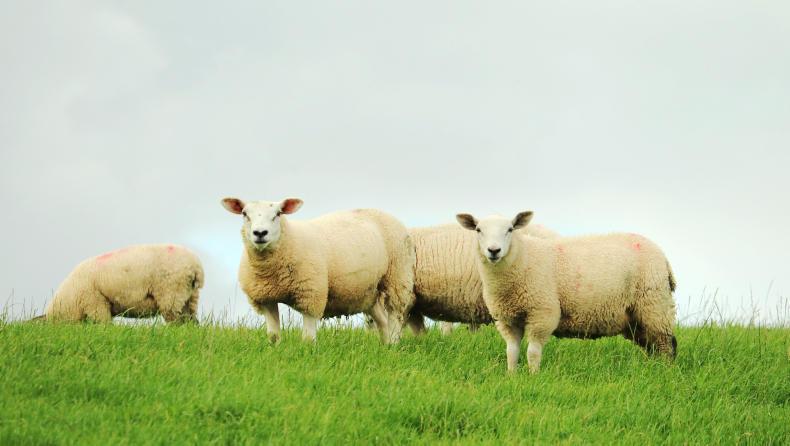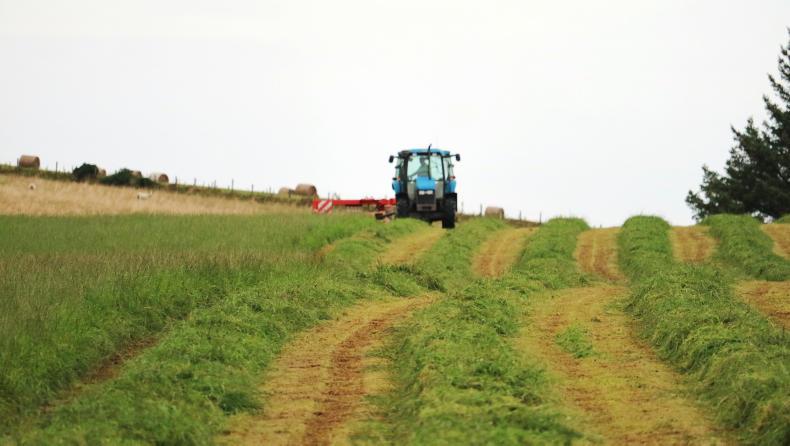September has arrived and with it you can begin to see the evenings losing light that bit quicker.
As I write, we have just finished second-cut silage and are hopefully set up with enough silage for another winter period.
The second-cut was a mixture of bales on the out farm at Foggie and pit silage here at Cranna. Overall, both the quality and yield were good and we yielded eight bales per acre.
We would prefer to make all pit silage as we can do it all ourselves and we are well set up to feed pit silage through the winter.
Unfortunately, we don’t have the space at the moment to pit all the silage.
On a quick calculation we have plenty of tonnes in the yard to see us through the winter period.
We will do a winter feed budget in the coming weeks and get the silage analysed once it has been ensiled over six weeks.
The best quality silage will be targeted at the autumn calvers and young stock on the farm.
Harvest
After a bit of waiting, winter barley is now all harvested. It yielded well, at just over 3t/acre (7.4t/ha) at about 19-20% moisture.
Some of it had been sprayed off longer than we would have liked but there was nothing we could do as we were waiting for the weather. It has since been prop-corned. The straw yielded eight bales per acre.
The next job will be to get the 30 or so acres of spring barley cut and then move on to getting next year’s winter barley sown which will be around 70 acres in total.
This year we have selected two varieties to grow; Tower, which did really well here this year and Bazooka, a six-row variety.
Reseed
We also have 37 acres of new grass to get in. This is going down to a medium to long-term ley mix, Castlehill from Sinclair McGill. The sheep will graze this ground next year.
Grazing the sheep on the new grass is really working well here. There are two benefits of doing this. Firstly, the sheep help the new sward tiller out and smother out any weeds. This has been especially true this year with rotationally grazing the sheep over the new ley.

We split a 7ha park into four equal divisions. It was the first days of May by the time the ewes and lambs got on to graze it and we ended up taking out one of the four paddocks as bales at the end of May.
This 7ha has kept 140 ewes running twin lambs all season. We even had 10 cows and calves in for a week or so to try and get on top of the grass.
At this stage, each division has had more than six grazings which has helped to thicken it out.
We have grown over 8,100kg/ha on this field at this stage and are hopeful we can reach 10t/ha by the end of October.
With the lambs now weaned and the ewes moved to another part of the farm, the grazing pressure has dropped somewhat and the grass covers are building nicely in front of the lambs to carry them over the next couple of months.
The other major benefit is that it’s clean grazing for the sheep and we noticed much lower worm burdens since we moved to having the ewes graze the reseeds.
You can tell that the grass quality was good throughout the season from the weaning weights of the lambs, showing that the ewes have plenty of milk, but also by the good condition of the ewes at weaning time.
The lambs were weaned at 110 days old this year and averaged 33.5kg across the board. There was also a batch of 16 that were drafted prior to weaning at 46kg.
Ewe numbers
We plan to push ewe numbers up slightly this year. As winter accommodation is the first limiting factor for us here, any further expansion in cow numbers would require further housing.
Therefore, we see expansion coming from the sheep enterprise. This spring we lambed 230 ewes.
We will hopefully put 300 ewes to the tup this October. We buy in mule gimmers every year and keep the first cross from them for breeding.
Along with these, this year we are looking at purchasing some Cheviot gimmers. We are going to try the Cheviot as they should have more wool on their belly for protection from poor weather conditions in spring.
We find the mules great mothers and they work very well here, but one down side is that we have to cull a number of ewes each year due to mastitis problems from early lactation. We will see how the Cheviots fair next spring.
Swedes
Every year we grow neeps (swedes) for the later lambs to go onto in early December for finishing in the new year.
This year, we hope that there will only be a handful of lambs still around come December. They can still go to the neeps but they will not need that much.
Therefore, the plan is for the ewes to go onto the neeps for five to six weeks from early January. This will give the grass parks a break and a chance to recover coming into the springtime. They will move back to grass about three weeks prior to lambing.
Cattle
We weaned the autumn-calving cows about three weeks ago. Overall, the cows were in good condition.
We went through them and pulled out the fittest 10 or 12 and put them onto the winter barley stubbles to manage condition in the run up to calving.
Last year, we had some difficulties at calving time even though the cows didn’t seem over conditioned.

However, most of the problems were with heifers. We’re hoping to have a smoother run this back end. There are 60 in total to calve which will start at the beginning of October.
In the spring herd, the bulls have been in for 10 weeks now so they still have two to go.
There doesn’t seem to be much bulling activity at this stage which is good. After six weeks, we swapped all the bulls around just as an insurance policy in case any of the bulls weren’t doing their job.
We will scan 40 days after the bulls come out and anything not in calf at that stage will be culled.
